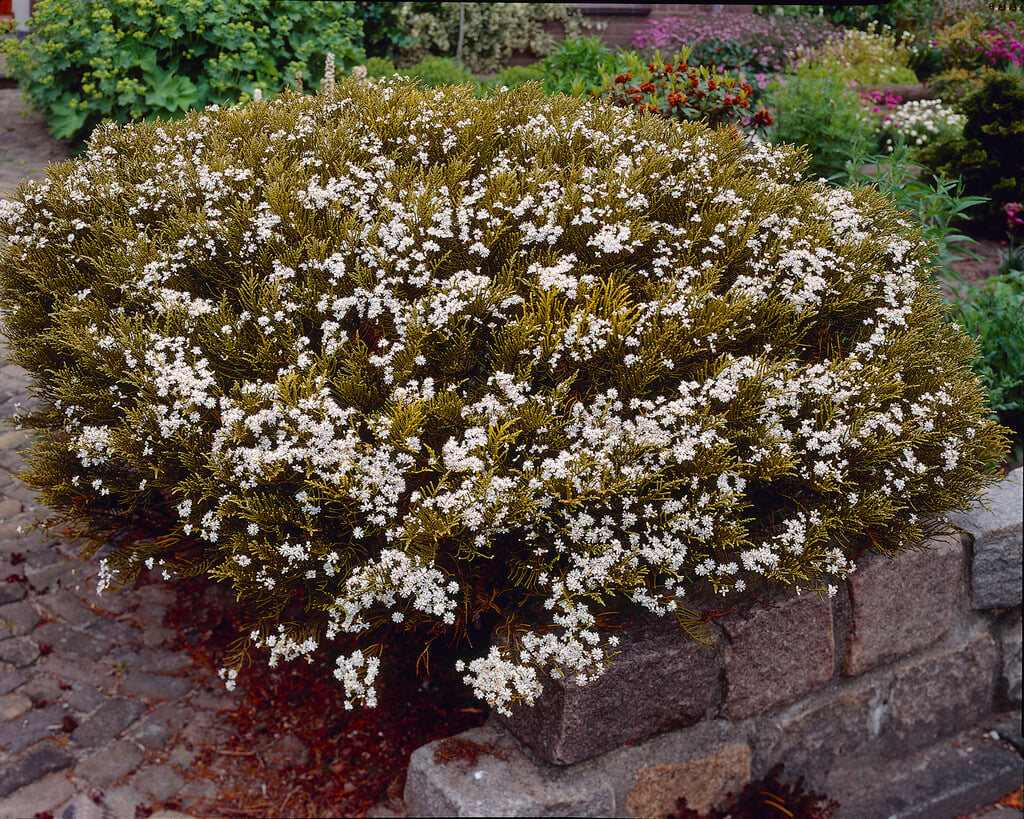Veronica ochracea (H)
ochre-coloured hebe
A compact, dense, evergreen shrub to 1m tall and wide with erect, slender shoots covered with golden-brown, scale-like leaves; clusters of small, white flowers are produced in late spring and early summer
Size
Ultimate height
0.5–1 metresTime to ultimate height
5–10 yearsUltimate spread
0.5–1 metresGrowing conditions
Moisture
Moist but well–drained, Well–drainedpH
Alkaline, NeutralColour & scent
| Stem | Flower | Foliage | Fruit | |
| Spring | White | Brown Gold | ||
|---|---|---|---|---|
| Summer | White | Brown Gold | ||
| Autumn | Brown Gold | |||
| Winter | Brown Gold |
Position
- Full sun
- Partial shade
Aspect
East–facing or North–facing or South–facing or West–facing
Exposure
Exposed or ShelteredDrought resistance
Yes Hardiness
H4Botanical details
- Family
- Plantaginaceae
- Native to GB / Ireland
- No
- Foliage
- Evergreen
- Habit
- Bushy
- Genus
Veronica can be annuals, perennials or sub-shrubs with paired leaves and small flowers usually in terminal or axillary racemes or spikes
- Name status
Correct
- Horticultural Group
- This genus has changed from Hebe to Veronica
- Plant range
- New Zealand (S.Island)
How to grow
Cultivation
Easy to grow in a moist but well-drained soil in sun or partial shade
Propagation
Propagate by semi-hardwood cuttings
Suggested planting locations and garden types
- Coastal
- Cottage and informal garden
- Rock garden
- Patio and container plants
- Wildlife gardens
- Flower borders and beds
Pruning
Pests
May be susceptible to aphids and tortrix moth
Diseases
High Risk Host for Xylella fastidiosa. May be susceptible to downy mildews, fungal leaf spot, fungal rot, Phytophthora and sometimes honey fungus
Get involved
The RHS is the UK’s gardening charity, helping people and plants to grow - nurturing a healthier, happier world, one person and one plant at a time.
